
LOADING ...
In response to evolving domestic opinion, eMedals Inc has made the conscious decision to remove the presentation of German Third Reich historical artifacts from our online catalogue. For three decades, eMedals Inc has made an effort to preserve history in all its forms. As historians and researchers, we have managed sensitive articles and materials with the greatest of care and respect for their past and present social context. We acknowledge the growing sentiments put forth by the Canadian public and have taken proactive actions to address this opinion.
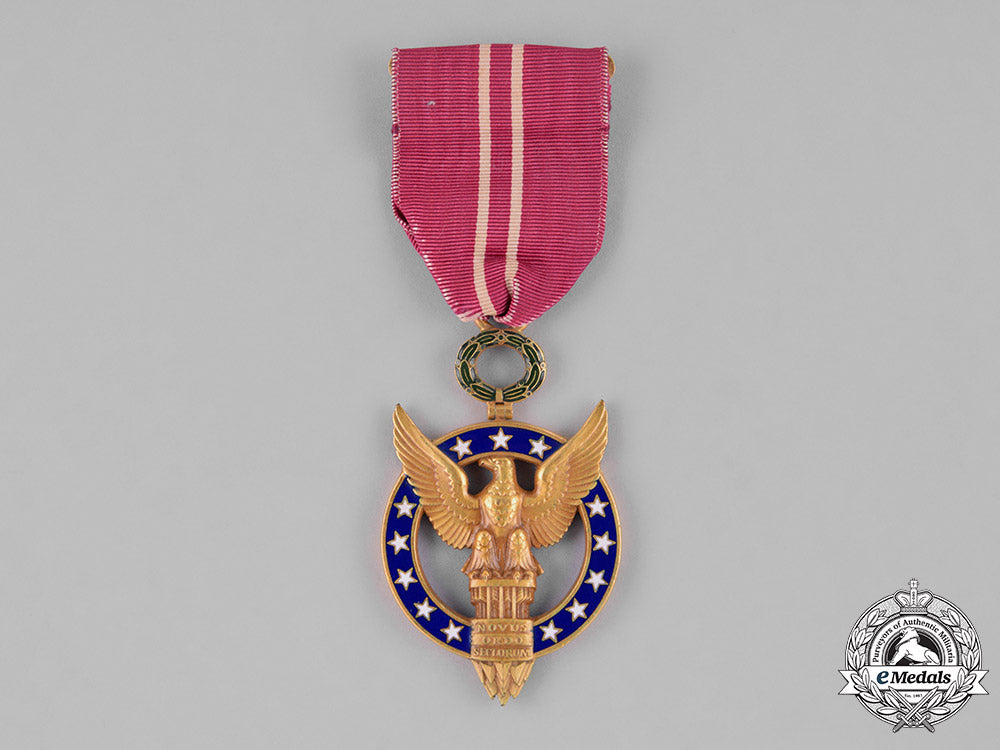
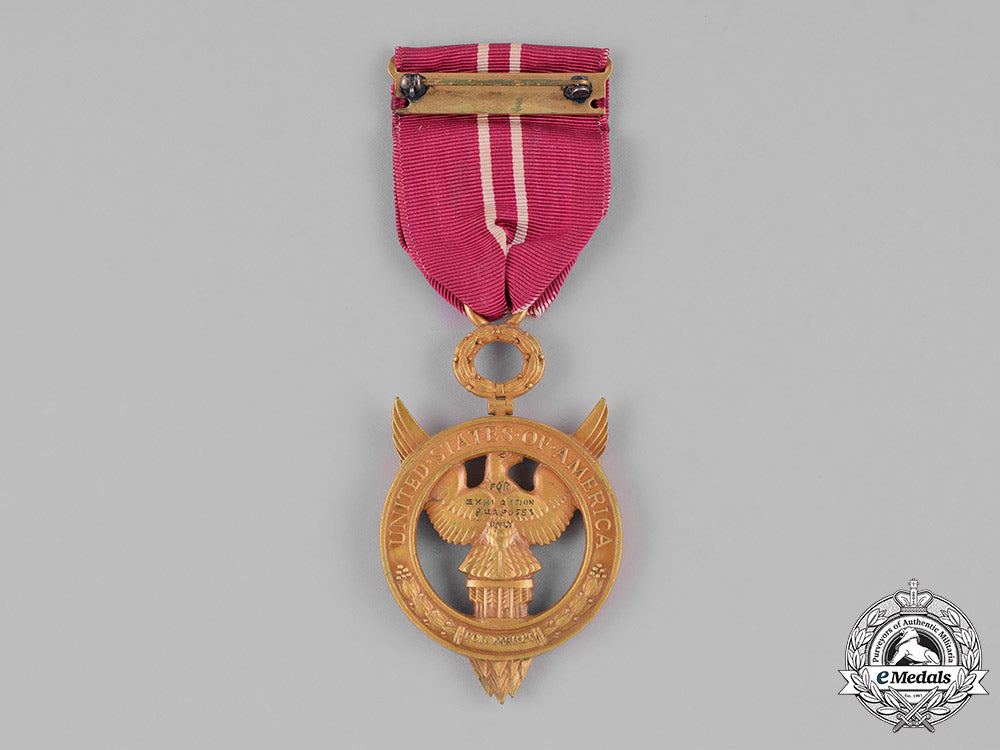
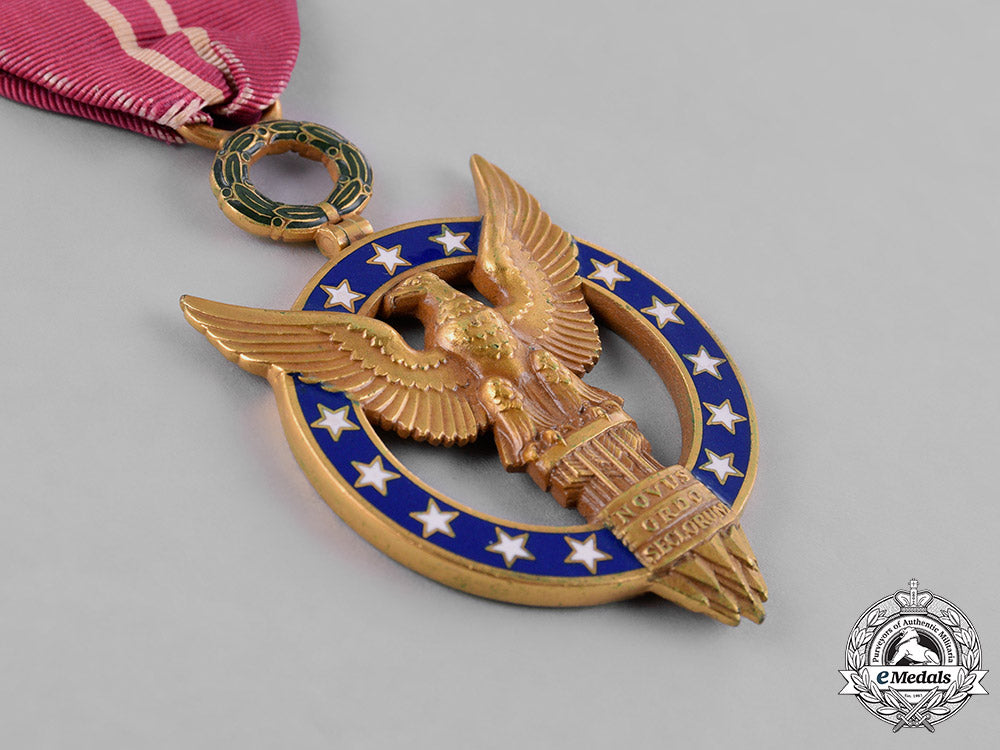
United States. A Presidential Medal Of Merit "For Exhibition Purposes Only"
United States. A Presidential Medal Of Merit "For Exhibition Purposes Only"
SKU: ITEM: M0041-200
Current Bid:
Your Max Bid:
Bid History:
Time Remaining:
Couldn't load pickup availability
Shipping Details
Shipping Details
eMedals offers rapid domestic and international shipping. Orders received prior to 12:00pm (EST) will be shipped on the same business day.* Orders placed on Canadian Federal holidays will be dispatched the subsequent business day. Courier tracking numbers are provided for all shipments. All items purchased from eMedals can be returned for a full monetary refund or merchandise credit, providing the criteria presented in our Terms & Conditions are met. *Please note that the addition of a COA may impact dispatch time.
Shipping Details
eMedals offers rapid domestic and international shipping. Orders received prior to 12:00pm (EST) will be shipped on the same business day.* Orders placed on Canadian Federal holidays will be dispatched the subsequent business day. Courier tracking numbers are provided for all shipments. All items purchased from eMedals can be returned for a full monetary refund or merchandise credit, providing the criteria presented in our Terms & Conditions are met. *Please note that the addition of a COA may impact dispatch time.
Description
Description
Instituted in 1942. 1942-1952. In bronze gilt with blue, white and green enamels, engraved "FOR EXHIBITION PURPOSES ONLY" on the reverse, measuring 38.7 mm (w) x 60.5 mm (h) inclusive of its wreath suspension, intact enamels, original ribbon with brooch pinback, extremely fine.
Footnote: The Medal for Merit was, during the period it was awarded, the highest civilian decoration of the United States, awarded by the President of the United States, to civilians for "exceptionally meritorious conduct in the performance of outstanding services ... since the proclamation of an emergency by the President on September 8, 1939". The Medal for Merit was created by Public Law 77-671 and its awarding codified by Executive Order 9286 - Medal for Merit on December 24, 1942, later amended and restated by Executive Order 9857A of May 27, 1947. Created during the Second World War, and awarded to "civilians of the nations prosecuting the war under the joint declaration of the United Nations and of other friendly foreign nations", the medal has not been awarded since 1952. The first medals were awarded to John C. Garand and Albert Hoyt Taylor on March 28, 1944. The Medal for Merit is currently listed as seventh in order of precedence of U.S. civilian decorations, below the Silver Lifesaving Medal and above the National Intelligence Distinguished Service Medal. Civilians of foreign nations could receive the award for the performance of an exceptionally meritorious or courageous act or acts in furtherance of the war efforts of the Allies against the Axis Powers. The first person to receive this medal who was not an American citizen was Edgar Sengier, the director of the Belgian Union Minière du Haut Katanga during World War II. Sengier was awarded the Medalfor Merit on April 9, 1946. The second foreign civilian to receive the medal was the Canadian spymaster William Stephenson in November 1946. Stephenson had the code name "Intrepid" during the Second World War. Some writers consider Stephenson to be one of the real life inspirations for the fictitious character "James Bond". Another one was the British Sir Robert Watson-Watt, a pioneer of radar, who created a chain of radar stations around the UK which enabled advance information to be available to the Royal Air Force of incoming German aircraft and was instrumental in the winning of the 1940 Battle of Britain. He was sent to the US in 1941 to advise on air defence, after Japan’s attack on Pearl Harbor. He was awarded the US Medal for Merit in 1946. All proposed awards were considered by the Medal for Merit Board, consisting of three members appointed by the President, of whom one was appointed as the Chairman of the Board. This medal cannot be awarded for any action relating to the prosecution of the Second World War after the end of hostilities (as proclaimed by Proclamation No. 2714 of December 31, 1946), and no proposal for this award for such services could be submitted after June 30, 1947. The last medal of this type was awarded in 1952 after a long delay in processing.
Description
Instituted in 1942. 1942-1952. In bronze gilt with blue, white and green enamels, engraved "FOR EXHIBITION PURPOSES ONLY" on the reverse, measuring 38.7 mm (w) x 60.5 mm (h) inclusive of its wreath suspension, intact enamels, original ribbon with brooch pinback, extremely fine.
Footnote: The Medal for Merit was, during the period it was awarded, the highest civilian decoration of the United States, awarded by the President of the United States, to civilians for "exceptionally meritorious conduct in the performance of outstanding services ... since the proclamation of an emergency by the President on September 8, 1939". The Medal for Merit was created by Public Law 77-671 and its awarding codified by Executive Order 9286 - Medal for Merit on December 24, 1942, later amended and restated by Executive Order 9857A of May 27, 1947. Created during the Second World War, and awarded to "civilians of the nations prosecuting the war under the joint declaration of the United Nations and of other friendly foreign nations", the medal has not been awarded since 1952. The first medals were awarded to John C. Garand and Albert Hoyt Taylor on March 28, 1944. The Medal for Merit is currently listed as seventh in order of precedence of U.S. civilian decorations, below the Silver Lifesaving Medal and above the National Intelligence Distinguished Service Medal. Civilians of foreign nations could receive the award for the performance of an exceptionally meritorious or courageous act or acts in furtherance of the war efforts of the Allies against the Axis Powers. The first person to receive this medal who was not an American citizen was Edgar Sengier, the director of the Belgian Union Minière du Haut Katanga during World War II. Sengier was awarded the Medalfor Merit on April 9, 1946. The second foreign civilian to receive the medal was the Canadian spymaster William Stephenson in November 1946. Stephenson had the code name "Intrepid" during the Second World War. Some writers consider Stephenson to be one of the real life inspirations for the fictitious character "James Bond". Another one was the British Sir Robert Watson-Watt, a pioneer of radar, who created a chain of radar stations around the UK which enabled advance information to be available to the Royal Air Force of incoming German aircraft and was instrumental in the winning of the 1940 Battle of Britain. He was sent to the US in 1941 to advise on air defence, after Japan’s attack on Pearl Harbor. He was awarded the US Medal for Merit in 1946. All proposed awards were considered by the Medal for Merit Board, consisting of three members appointed by the President, of whom one was appointed as the Chairman of the Board. This medal cannot be awarded for any action relating to the prosecution of the Second World War after the end of hostilities (as proclaimed by Proclamation No. 2714 of December 31, 1946), and no proposal for this award for such services could be submitted after June 30, 1947. The last medal of this type was awarded in 1952 after a long delay in processing.
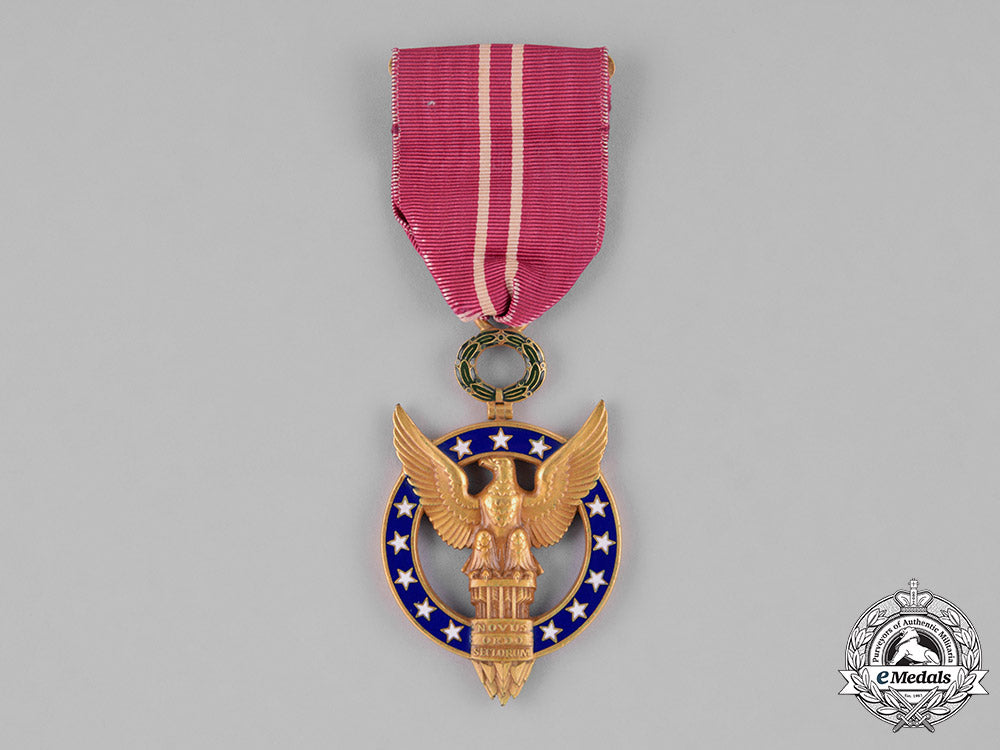
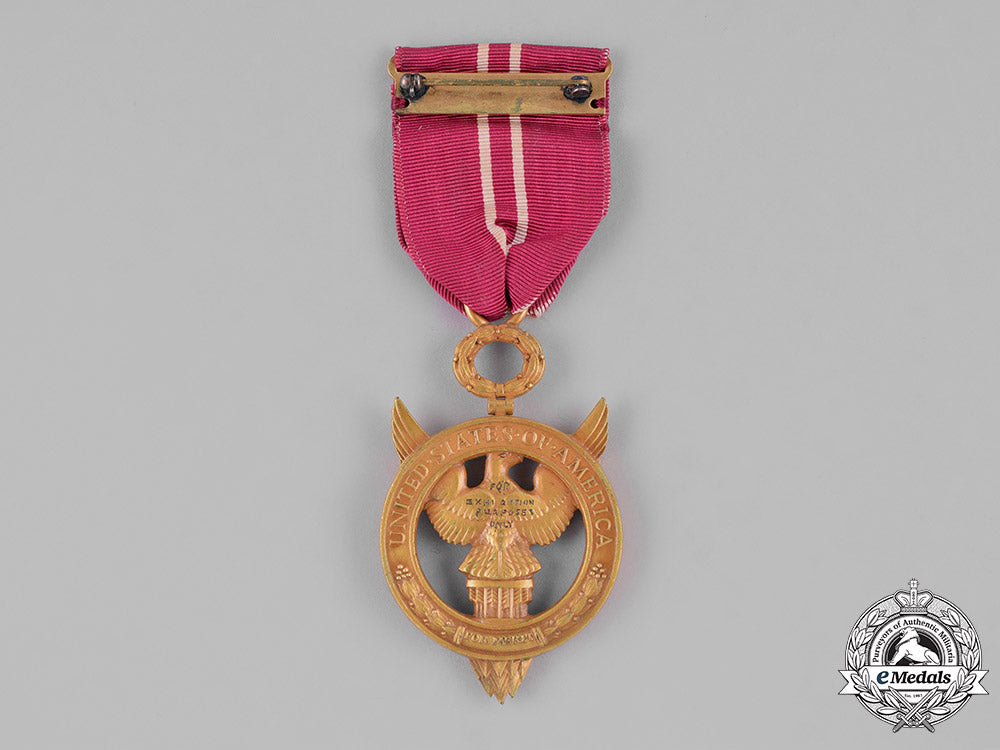
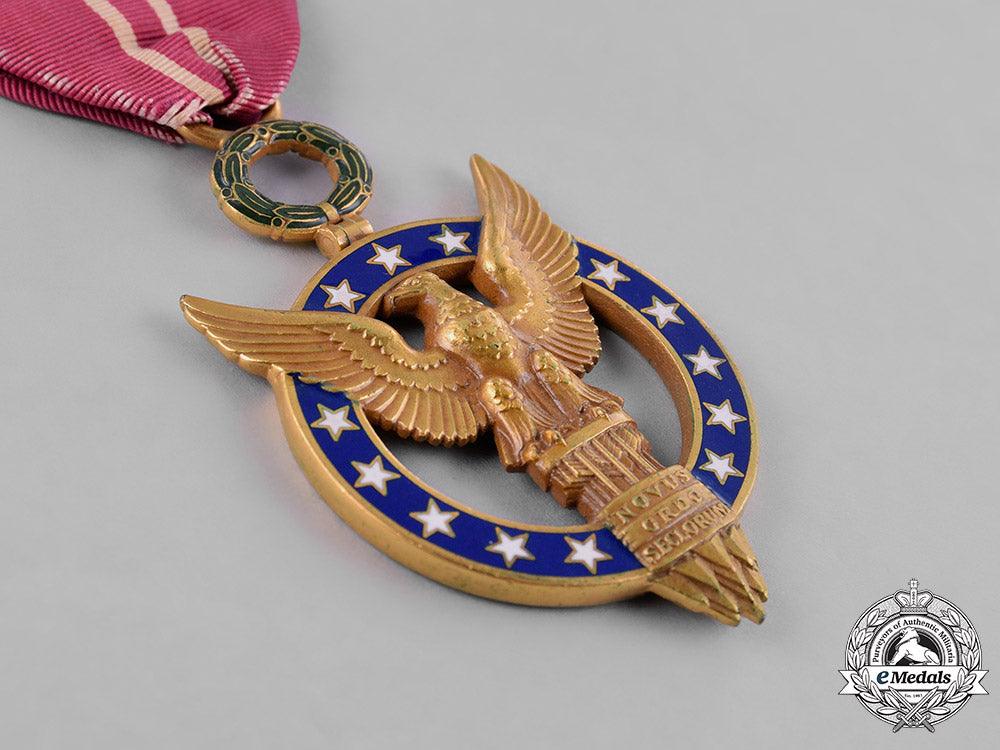
You May Also Like
Japan, Empire. A T90 Civil Defense Helmet, c.1943
W8287
Germany, SA. A Model 1933 Service Dagger, SA-Gruppe Nordsee, by Friedrich von der Kohlen
G59818
Germany, SA. A Model 1933 Service Dagger, SA-Gruppe Pommern, by Gustav Wirth
G59816
Germany, Third Reich. A Mixed Lot of Tyrolean Marksmanship Badges
G52930
Germany, SS. An Estonian Waffen-SS Volunteer’s Sleeve Shield
G50381
-
Japan, Empire. A T90 Civil Defense Helmet, c.1943
W8287
Add to CartRegular price $275 USDRegular price $0 USD Sale price $275 USDUnit price / per -
Germany, SA. A Model 1933 Service Dagger, SA-Gruppe Nordsee, by Friedrich von der Kohlen
G59818
Add to CartRegular price $980 USDRegular price $0 USD Sale price $980 USDUnit price / per -
Germany, SA. A Model 1933 Service Dagger, SA-Gruppe Pommern, by Gustav Wirth
G59816
Add to CartRegular price $980 USDRegular price $0 USD Sale price $980 USDUnit price / per -
Germany, Third Reich. A Mixed Lot of Tyrolean Marksmanship Badges
G52930
Add to CartRegular price $135 USDRegular price $0 USD Sale price $135 USDUnit price / per -
Germany, SS. An Estonian Waffen-SS Volunteer’s Sleeve Shield
G50381
Add to CartRegular price $150 USDRegular price $0 USD Sale price $150 USDUnit price / per
Do you have a similar item you are interested in selling?
Please complete the form and our client care representatives will contact you.
Sell Item










